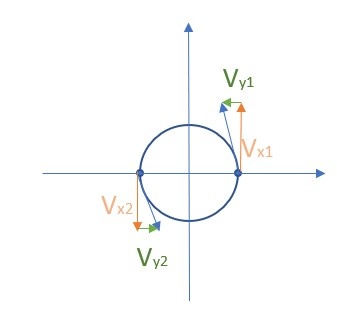

In this first example we show you how to write your code in C++ how to geht your code to work in the Lab Control Center. Using this example code your vehicles will drive in a circle (not attached to the map). The code also includes a possible solution to drive a figure eight (see code comments).
You define the position of the target points, the speed of your vehicle for each section and the time the vehicle needs to pass a segment. In this example the target points are not connected to the map.
This vector defines the x position of a target point (m):
vector<double> trajectory_px = vector<double>{ 1, 0, -1, 0}This vector defines the y position of a target point (m):
vector<double> trajectory_py = vector<double>{ 0, 1, 0, -1}This vector defines the x speed to the target point. The sign gives the orientation in the cartesian coordinate system (unit (m/s)):
vector<double> trajectory_vx = vector<double>{ 0, -1, 0, 1}This vector defines the y speed to the target point. The sign gives the orientation in the cartesian coordinate system (unit (m/s)):
vector<double> trajectory_vy = vector<double>{ 1, 0, -1, 0}This vector defines the time the vehicle takes between two target points (unit ns):
vector<uint64_t> segment_duration = vector<uint64_t>{1550000000ull, 1550000000ull, 1550000000ull, 1550000000ull}In this vector we see the time for 1 m/s and a way length of pi/2 (a quater circle ;))
Advice for use:
|  |
|---|
Circular trajectory generation for one vehicle
Circular trajectory generation for one vehicle